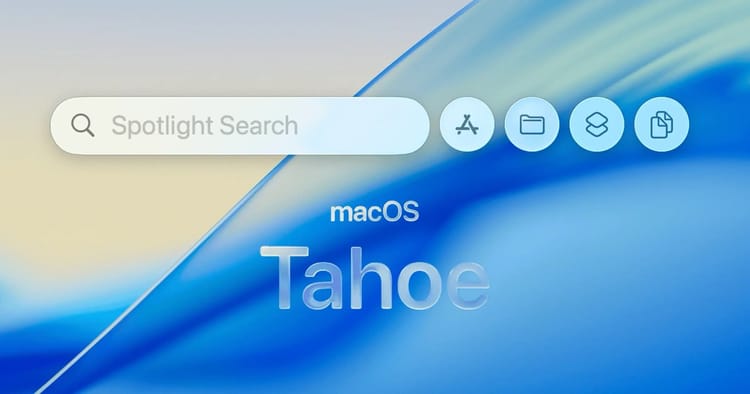Mac Keyboard Shortcuts

Keyboard shortcuts in macOS are not just about saving time; they're about creating a more seamless and intuitive interaction with your computer. By integrating these shortcuts into your daily routine, you'll find yourself navigating through tasks with greater speed and precision.
In this post, we'll explore the most commonly used macOS shortcuts, as well as some lesser-known gems that can significantly elevate your computing experience. So, grab a cup of coffee, and let's dive into the world of macOS shortcuts, where efficiency meets elegance.
Common Shortcuts: Cut, Copy, Paste, and More
- Command-X Cut the selected item and copy it to the Clipboard
- Command-C Copy the selected item to the Clipboard. This also works for files in the Finder
- Command-V Paste the contents of the Clipboard into the current document or app. This also works for files in the Finder
- Command-Z Undo the previous command. You can then press Shift-Command-Z to Redo, reversing the undo command. In some apps, you can undo and redo multiple commands
- Command-A Select All items
- Command-F Find items in a document or open a Find window
- Command-G Find Again: Find the next occurrence of the item previously found. To find the previous occurrence, press Shift-Command-G
- Command-H Hide the windows of the front app. To view the front app but hide all other apps, press Option-Command-H
- Command-M Minimize the front window to the Dock. To minimize all windows of the front app, press Option-Command-M
- Command-O Open the selected item, or open a dialog to select a file to open
- Command-P Print the current document
- Command-S Save the current document
- Command-T Open a new tab
- Command-W Close the front window. To close all windows of the app, press Option-Command-W
- Option-Command-Esc Force quit an app
- Command–Space bar Show or hide the Spotlight search field. To perform a Spotlight search from a Finder window, press Command–Option–Space bar
- Control–Command–Space bar Show the Character Viewer, from which you can choose emoji and other symbols
- Control-Command-F Use the app in full screen, if supported by the app
- Space bar Use Quick Look to preview the selected item
- Command-Tab Switch to the next most recently used app among your open apps
- Command–Grave accent (`) Switch between the windows of the app you're using
- Shift-Command-5 In macOS Mojave or later, take a screenshot or make a screen recording. Or use Shift-Command-3 or Shift-Command-4 for screenshots
- Shift-Command-N Create a new folder in the Finder
- Command-Comma (,) Open preferences for the front app
Function Key Commands: Shortcuts to Save Time
- Fn+n Notifications Center
- Fn+c Control Center
- Fn+Shift+A Launchpad
- Fn+h Reveal Desktop
- Fn+f Full-screen Window Toggle
- Fn+q Quick Note
- Fn+e Emoji and Special Character Viewer
- Fn+d Dictation
- Fn+up/down Page Up/Down
- Fn+left/right Home/End
- Fn+delete Forward Delete
- Fn+a Dock Focus
Finder Shortcuts: Quick File Management
- Command-D Duplicate the selected files
- Command-E Eject the selected disk or volume
- Command-F Start a Spotlight search in the Finder window
- Command-I Show the Get Info window for a selected file
- Command-R (1) When an alias is selected in the Finder: show the original file for the selected alias. (2) In some apps, such as Calendar or Safari, refresh or reload the page. (3) In Software Update, check for software updates again
- Shift-Command-C Open the Computer window
- Shift-Command-D Open the desktop folder
- Shift-Command-F Open the Recents window, showing all of the files you viewed or changed recently
- Shift-Command-G Open a Go to Folder window
- Shift-Command-H Open the Home folder of the current macOS user account
- Shift-Command-I Open iCloud Drive
- Shift-Command-K Open the Network window
- Option-Command-L Open the Downloads folder
- Shift-Command-N Create a new folder
- Shift-Command-O Open the Documents folder
- Shift-Command-P Show or hide the Preview pane in Finder windows
- Shift-Command-R Open the AirDrop window
- Shift-Command-T Show or hide the tab bar in Finder windows
- Control-Shift-Command-T Add selected Finder item to the Dock (OS X Mavericks or later)
- Shift-Command-U Open the Utilities folder
- Option-Command-D Show or hide the Dock
- Control-Command-T Add the selected item to the sidebar (OS X Mavericks or later)
- Option-Command-P Hide or show the path bar in Finder windows
- Option-Command-S Hide or show the Sidebar in Finder windows
- Command–Slash (/) Hide or show the status bar in Finder windows
- Command-J Show View Options
- Command-K Open the Connect to Server window
- Control-Command-A Make an alias of the selected item
- Command-N Open a new Finder window
- Option-Command-N Create a new Smart Folder
- Command-T Show or hide the tab bar when a single tab is open in the current Finder window
- Option-Command-T Show or hide the toolbar when a single tab is open in the current Finder window
- Option-Command-V Move the files in the Clipboard from their original location to the current location
- Command-Y Use Quick Look to preview the selected files
- Option-Command-Y View a Quick Look slideshow of the selected files
- Command-1 View the items in the Finder window as icons
- Command-2 View the items in a Finder window as a list
- Command-3 View the items in a Finder window in columns
- Command-4 View the items in a Finder window in a gallery
- Command–Left Bracket ([) Go to the previous folder
- Command–Right Bracket (]) Go to the next folder
- Command–Up Arrow Open the folder that contains the current folder
- Command–Control–Up Arrow Open the folder that contains the current folder in a new window
- Command–Down Arrow Open the selected item
- Right Arrow Open the selected folder (list view only)
- Left Arrow Close the selected folder (list view only)
- Command-Delete Move the selected item to the Trash
- Shift-Command-Delete Empty the Trash
- Option-Shift-Command-Delete Empty the Trash without confirmation dialog
- Command–Brightness Down Turn video mirroring on or off when your Mac is connected to more than one display
- Option–Brightness Up Open Displays preferences
- Control–Brightness Up or Control–Brightness Down Change the brightness of your external display, if supported by your display
- Option–Shift–Brightness Up or Option–Shift–Brightness Down Adjust the display brightness in smaller steps
- Option–Mission Control Open Mission Control preferences
- Command–Mission Control Show the desktop
- Control–Down Arrow Show all windows of the front app
- Option–Volume Up Open Sound preferences
- Option–Shift–Volume Up or Option–Shift–Volume Down Adjust the sound volume in smaller steps
- Option–Keyboard Brightness Up Open Keyboard preferences
- Option–Shift–Keyboard Brightness Up or Option–Shift–Keyboard Brightness Down Adjust the keyboard brightness in smaller steps
- Option key while double-clicking Open the item in a separate window, then close the original window
- Command key while double-clicking Open a folder in a separate tab or window
- Command key while dragging to another volume Move the dragged item to the other volume, instead of copying it
- Option key while dragging Copy the dragged item
- Option-Command while dragging Make an alias of the dragged item
- Option-click a disclosure triangle Open all folders within the selected folder (list view only)
- Command-click a window title See the folders that contain the current folder


